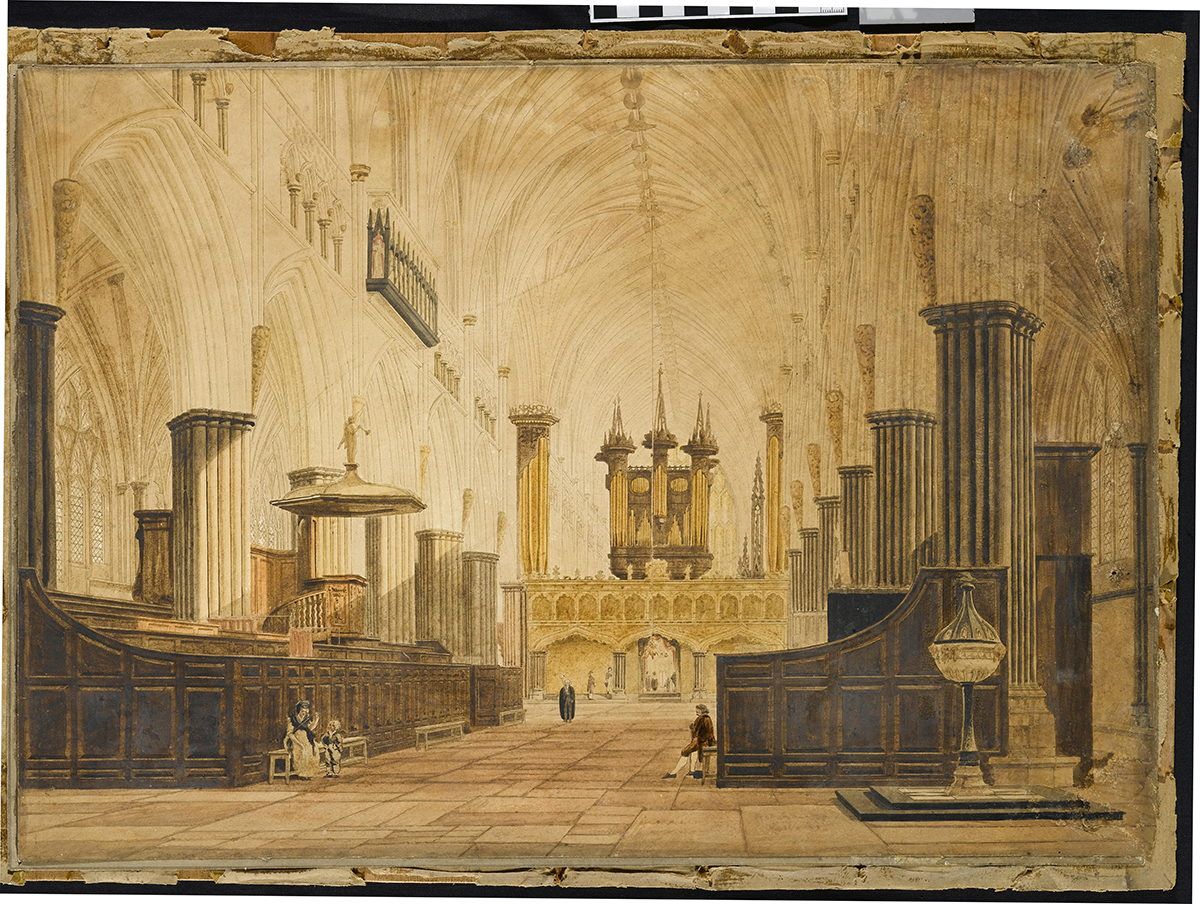 By Ellie Jones, Cathedral Archivist
By Ellie Jones, Cathedral Archivist
This pen and ink drawing with watercolour pigments is known at the Cathedral as the ‘Leakey Watercolour’. It shows the interior of the nave in about 1800. The seating, pulpit, screen, and font are strikingly different to the furnishings you will see today. The inclusion of several human figures brings life to the scene: a woman appears to be disciplining her unhappy child and a man sits with his head bowed as a virger walks towards them. A small group of people has gathered at the pulpitum screen as the clergy begin to emerge from the quire.
The painting, which had previously hung in the Chapter House had suffered severe damp and mould damage and was crumbling at the edges. In 2006 a conservator was employed to save the picture. He visited the Archives this week and said that it remained one of the most challenging projects of his career.
Born in Exeter in 1775, James Leakey lived almost all of his 90 years in the city, mostly in Southernhay. Not much is known about his early or personal life, but at the age of 40 he married Eliza Hubbard Woolmer at St Sidwell’s, Exeter, and they had 11 children. One daughter Emily – who died in 1930 at the age of 94 – was the last person to have the right of burial at St Sidwell’s churchyard. As a young woman Emily had co-founded a “Home for Friendless Girls” in London and was known as a witty writer and speaker. Another daughter, Caroline, was also a writer who travelled to Tasmania and was active in charitable and religious organisations in Exeter. Three sons became clergymen. James Leakey was himself a devout Christian and when he retired from painting he spent many of his long retirement years as a preacher.
Leakey’s paintings were popular in the first half of the 19th century and he had a successful career producing landscapes, portraits and miniatures. His work was especially well known in his home-town of Exeter, and in the South West more generally, although he did exhibit several of his paintings at the Royal Society in London at the height of his career. He received the most praise for his portrait miniatures, often executed in oils on ivory with a fineness and delicacy of brushstroke which gave an appearance of watercolour or work on enamel.
A small painting Head of Christ by James Leakey hangs in Oldham’s Chantry at the Cathedral; other works are held by The Royal Albert Memorial Museum, the Guildhall Exeter, the RD&E Hospital, The National Portrait Gallery and elsewhere.